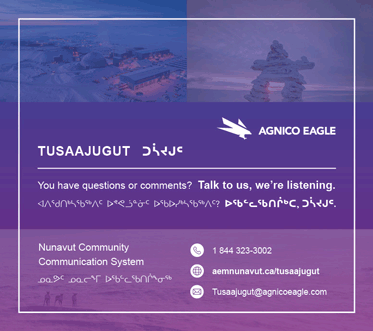Dog-team owners growling over Iqaluit dog bylaw
Proposed bylaw treats the noble Inuit sled dogs like a mangy menace, dog-team owners complain.
VALERIE G. CONNELL
Dog-team owners have bones to pick with Iqaluit’s proposed animal-control bylaw.
The proposed bylaw, which will come before Iqaluit Town Council for second reading Jan. 23, includes a new section detailing the “keeping of dog teams.”
But team owners say the bylaw treats the territory’s official animal like a threat or a pest.
“I find it crazy in a year when the Nunavut government recognizes the Canadian Inuit dog as the official animal of Nunavut… that the Town of Iqaluit does not address the sensitivity to the culture,” said Paul Crowley, a local dog-team owner.
Instead, Crowley said, the bylaw mixes the Canadian Inuit dog and sled-dog teams in with the regulation of pets and vicious dogs.
This is the first time dog teams have been included in Iqaluit’s animal-control bylaw.
“You’re lumping in apples and oranges, and you shouldn’t be,” Crowley said.
Limits to access
The proposed bylaw restricts dog teams from sidewalks, streets or roads in the municipality.
“It pretty well bans them from town,” Crowley said.
Local dog-team owner John Laird said he’s concerned the restrictions will make it harder for him to feed and move his dogs, and may ultimately deter the keeping of dogs in Iqaluit.
Sled dogs are moved seasonally to the tundra or sea ice in winter and next to running water in summer.
Dog-team owners have already made concessions in keeping dogs chained in designated areas, Laird said.
He said designated areas for dog teams must be easily accessible to owners.
“As the town grows their needs to be place for dogs within the development where dogs are not squeezed out.”
Insurance worries
Both Laird and Crowley voiced concerns over the bylaw’s requirement that dog-team owners carry $500,000 in liability insurance.
Laird said he’s looking into where such insurance can be purchased. He said insurance is available for outfitters through Nunavut Tourism, but he’s not an outfitter.
He feels that buying insurance should be left up to the team owner. “It should be a personal choice,” Laird said.
Both Laird and Crowley fear the insurance costs may make it impossible to keep dogs and develop new teams in Iqaluit.
Laird said dog-team owners are trying to focus on safety, while the Town seems to view teams as a danger.
“Liability is after-the-fact, and we don’t want to deal with after-the-fact. We are concerned with safety to make sure no incidents like in the past happen again,” he said.
Laird said his dogs are not wild, vicious animals, but working dogs that need socialization. They should be seen as an asset rather than a liability, he said.
“It’s not like a wild cougar running through your town. They are trained,” he said. “The biggest threat is not using them. They’re working dogs.”
Both Laird and Crowley said they want to see a bylaw that weaves the Inuit dog into the future of Iqaluit in a safe and positive way.
Crowley said the Town needs to make a decision: “Do they, in the future of this city, want dog teams?”
Crowley said he would like to see a bylaw that “supports and promotes” teams, highlighting the cultural and traditional value of dog teams to Inuit people.
“As I’ve gotten more involved with dogs and dog teams, I’ve come to have such an incredible awe of how Inuit were ingenious in using dog teams to survive and thrive,” Crowley said. “It’s allowed me to have glimpses of what life was about.”





(0) Comments